Overmighty Officers
Published in Early Modern History (1500–1700), Features, Issue 4 (Winter 1999), Volume 7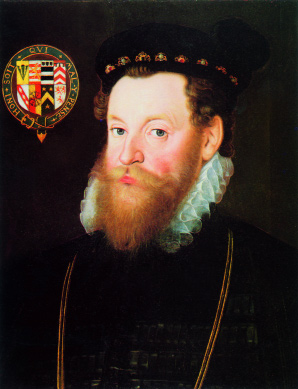
Sir Henry Sidney, lord deputy 1565-67, 1568-71 and 1575-78. His government was distinguished by mastery of propaganda, pomp and ceremony. (National Gallery of Ireland)
The historian William Camden, writing in Britaine (1610) described the lord deputy’s authority as ‘very large, ample and royal. And verily there is not (look throughout all Christendom againe) any other vice-roy that commeth nearer the majesty of a king, whether you respect his jurisdiction or authority or his traine, furniture and provision’. The travel-writer Fynes Moryson expanded on this description in the unpublished sections of his Itinerary (1617). The chief governor of Ireland was usually styled ‘Lord Deputy’ but if his prestige was greater or lesser the titles of ‘Lord Lieutenant’ and ‘Lord Justice’ were employed. He was appointed during the monarch’s pleasure and averaged about three years in office. He could grant pardons for life, land and goods, give safe-conducts to outlaws, parcel out the property of felons and traitors and control all wards under the rank of baron. Although the monarch had the appointing of the top jobs in the church, civil government and army, the lord deputy could make all other appointments. Furthermore being on the spot he had considerable influence over the top appointments as well and had great freedom of action despite the continuous flow of instructions from Whitehall. The Irish privy council, which he had to consult and work with, generally followed his lead. Besides, ‘the lord deputy may levy forces and do all things of regal authority, save coining of money’. Disputes between incoming and outgoing governors and Irish lobbying at court had forced the recall of governors in disgrace or a severe diminution in their ability to govern. Moryson wanted longer deputyships to stem corruption and sustain policy development. ‘It may be objected that it may prove dangerous to give a great man the absolute command of a kingdom for many years the more so because without the monarch’s presence a barbarous nation like the Irish were apt to worship the god they had before them.’ However Moryson asserted that a trusted servant of the crown would be unlikely to embrace ‘new and dangerous counsells’ if he were sufficiently well-estated in England and well-supervised from there.
As former secretary to Lord Deputy Mountjoy (1600-06), Moryson knew exactly the risks that the Irish job involved not only for its holder but also for the state it represented. He shied away from describing the Irish lord deputyship as a manifest danger to the stability of the state and its manner of governance. But the signs were there. A magnet for place-seekers as the head of a large establishment the Irish chief-governor had a degree of influence only surpassed by the monarch and by the Lord Treasurer of England. Furthermore Ireland unlike England had a standing army and the more its conquest proceeded, the more troops were in the hands of the deputy. Furthermore vice-regal attempts to extend English common law by extraordinary methods (especially manipulating royal prerogative or abusing martial law) had obvious potential to subvert the self-same constitution, not only in Ireland but elsewhere in the multiple kingdom.
English governors
In the Late Middle Ages it could be argued that the Irish deputyship was already a threat when the dominant Kildares supported the Yorkists in the English Wars of the Roses. This eventually led to the passing of Poynings’ Law to restrain the Irish parliament after the pretender Lambert Simnel was crowned king in Dublin. But the potential threat from English-born lord deputies after 1534 was much greater. Not only had they the means but they were also far more closely involved in the factional and ideological politics of England. In crushing the Kildare revolt (1534-5) and its sequel, the Geraldine League, the new English governors began to build up an English garrison in Ireland. In 1541 St Leger put the act of kingship through the Irish parliament and thereby changed the status of his office. He was now a viceroy and by seeking thereby to govern the whole of Ireland rather than just a third part of it, he vastly increased the post’s potential for influence and patronage.
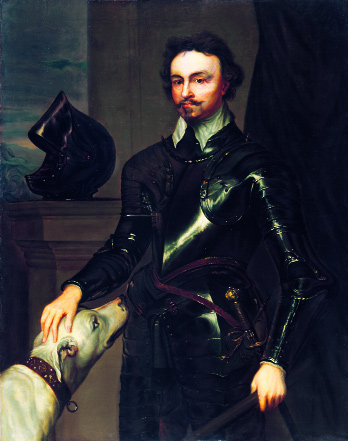
Portrait of Thomas Wentworth, first Earl of Strafford, lord deputy 1633-40, by an unknown artist after Sir Anthony Van Dyck. (National Portrait Gallery, London). Wentworth was painted three times by Van Dyck – as commander-in-chief with a submissive Irish hound, as a general with an army ready at the seaside and as a parliamentarian and administrator.
The next great governor was Sussex (1556-1564). He inaugurated conquest and colonisation in earnest and began establishing a cadre of officers in the army in Ireland from amongst his own clients. His major departure from constitutional norms was his regular deployment of martial law not just against rebels but pre-emptily against suspected ones. Indeed, he was an enthusiastic advocate for its use against dissidents in England and eventually got the opportunity himself in suppressing the Northern Rebellion of 1569.
Sir Henry Sidney
Sussex was succeeded by Sir Henry Sidney (1565-67, 1568-71 and 1575-78) who extended martial law nation-wide and established provincial presidencies which had already been mooted under his predecessors. His constitutional innovations were the establishment of the Castle Chamber, the Irish equivalent of the Star Chamber and an attempt to impose a permanent tax, a composition, to maintain the garrison. This scheme would have abolished the prerogative use of purveyance, the cess, but would have obviated the need to call parliament. The result was a damaging dispute with the Old English of the Pale which Sidney ultimately lost through the opposition of the Earl of Ormond and the desertion of his former associate, Lord Chancellor Gerrard, to the country cause. However, what distinguishes Sidney’s government was his mastery of propaganda, pomp and ceremony. More than any governor hitherto he used the post as a vehicle for self-promotion and, since we have little information dating from before his time, it may be the case that his deputyship saw the creation of, or at the very least the elaboration of, ceremonial attached to the office.
The main vehicle of Sidney’s propaganda were the long letters he wrote to court advertising his activities and his campaigns—how he was pacifying the country, being received enthusiastically in towns and erecting new buildings, in particular bridges, forts and gaols. His most important building projects were his construction of the Council Chamber in Dublin Castle, his renovation of Strongbow’s tomb in Christchurch Cathedral and a bridge across the Shannon at Athlone. These were given inscriptions bearing his name—indeed in the last two cases the inscriptions still survive. In the aftermath of his successful campaign against Shane O’Neill in Ulster, he renamed Lough Neagh ‘Lough Sidney’ and Shane’s treasure island on it ‘Island Sidney’. Neither name stuck. Following the same campaign, he brought 200 Irish gentlemen over to court in England with him in echoes of a Caesarean triumph.
After his parliament of 1569-71, he arranged to have the Irish statutes printed for the first time, including the posthumous attainder of Shane O’Neill which annexed most of Ulster to the crown.
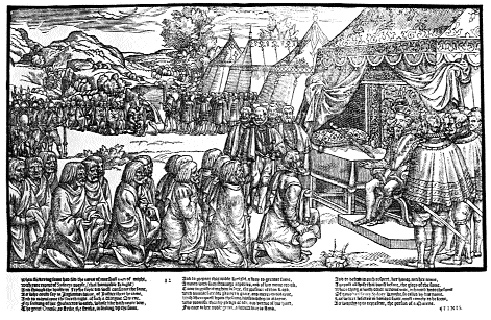
Sir Henry Sidney taking the submission of Turlough O’Neill. This woodcut from John Derrick’s Image of Irelande shows the parphernalia of state being displayed on vice-regal progress to impress the natives.
Its preamble eulogised Sidney’s campaign and directly compared the lord deputy with the original English conquerors of Ireland (Strongbow, etc.) whose work he was allegedly about to complete. Sidney also brought Edmund Campion over from Oxford in 1570 to write a history of Ireland concluding, of course, with his parliament. Campion later skipped abroad to become a Jesuit but parts of it were incorporated by Richard Stanihurst into the Irish section of Holinshed’s Chronicles (1577), dedicated to Sidney.
State ceremonial
With Sidney we also have the first glimpses of the pomp and ceremony surrounding the Irish lord deputyship. In John Derrick’s The Image of Irelande woodcuts we see Sidney seated under the cloth of state with the sword of state at rest on a cushion taking the submission of Turlough O’Neill and being received in triumph by the aldermen of Dublin with the sword of state borne beside him. In the second edition of Holinshed (1587) Sidney is described in parliament ‘where he sat under the clothe of estate, being apparelled in the princelie robes of crimson velvet doubled or lined with ermine’. During his 1575 circuit of Ireland he received ‘triumphs’ in Cork, ‘pomp and shews’ in Limerick. In Waterford he was greeted by the mayor and scholars in white robes delivering a Latin oration. ‘Great triumphs were made, both upon land and water, with all such shews and tokens of joie and gladness, as could be devised’. This elaboration of ceremonial was meant to honour the monarch in the person of her viceregal proxy but one must wonder at Sidney’s role and purpose. Arthur Collins, the eighteenth-century antiquarian who collected Sidney’s letters, noted how he was very careful about anything appertaining to his office or honour at public events and how he employed a range of officers expert in protocol and ceremony.
Image consultants
Philip Sidney gained status and on occasion precedence as a result of his father’s position. He even travelled around the continent with a standard bearing the motto filius pro regis Hiberniae (son of the viceroy of Ireland). Indeed a letter of advice which Sir Henry sent to his successor Arthur Lord Grey clearly indicates that he would have liked his son to have had the job. The Image of Irelande was dedicated to Philip Sidney when it was published in London in 1581. The subject matter was Sir Henry Sidney’s campaign against and destruction of Rory Óg O’More and of the more compliant submission of Turlough O’Neill. It completely ignored Sidney’s constitutional crisis with the Palesmen. The line was anti-Irish, anti-Catholic—the Gaelic Irish as a reprobate nation. It had doggerel verse by John Derrick, a customs official in Drogheda, and woodcuts executed in John Day’s workshop from drawings which Derrick made as Sidney’s war artist. The whole production—possibly the finest woodcuts of the Tudor period—must have cost a small fortune. If the object was to send Sir Henry or his son back to Ireland, the pitch failed. In 1582 Sir Henry refused to go back unless he got a peerage and a grant of lands. Eventually in 1583 Sir John Perrot, an extremely wealthy sheep-farmer, was selected.
Whilst the The Image of Irelande essentially portrayed the lord deputyship as a military office, so too did the long bombastic memoir about unrewarded service to the state which the bankrupt Sidney addressed to Secretary Walsingham in 1583. In this memoir Sidney also referred to his duties as Lord President of Wales from which office he had often been absent. He had been appointed there in 1560; when he returned from Ireland in 1567 he asked the queen for the post permanently. She refused but nevertheless he held it during pleasure until his death in 1586. The remarkable thing is that Sidney held the two highest provincial offices in the Tudor state. This gave him immense patronage and influence, and precedence in state ceremonial at court, far beyond his wealth or status. After his death, his secretary, Edmund Molineux, noted the great envy he had excited. No private subject had ever held the offices of Wales and Ireland together, besides the claim was heard that he had taken the western realm ‘to farm’.
Even after Sidney’s death the spin continued. John Hooker, a West Countryman whom Sidney had elected MP for Athenry in 1569, wrote up the recent history of Ireland for the second edition of Holinshed. The years 1545-1565 got six columns. Sussex got one paragraph. Sidney’s government, based on his long letters to court, Molineux’s notes and Derrick’s Image got forty pages and ended with a magnificent four page eulogy. Incidentally, in the obituaries of Sir Henry and Sir Philip in the English section of Holinshed, the father got a far longer write-up than the recently killed-in-action soldier-poet son.
One wonders what the queen thought of Sidney’s government of Ireland. The monarchy’s reputation had to be maintained in Ireland and the sword had to be unsheathed against rebels. But to what extent was Sidney merely promoting himself by developing this propaganda whilst at the same time denying loyal subjects their traditional rights by his high-handed actions? We know that the queen was tetchy about the powers granted to Leicester in the Netherlands; she was also tetchy about the preparations for Philip Sidney’s funeral. One wonders how Sidney or his army captains would have reacted had there been a crisis in England. Interestingly the Butler insurgents in the late 1560s alleged that Leicester wanted to force the queen to marry him, make himself king of England and make his brother-in-law, Sidney, king of Ireland. Perhaps then she was glad to see the back of both father and son within a year.
Perrot’s fall
Whatever the Queen’s opinion of Sidney’s might have been, what emerged from Sir John Perrot’s government, 1584-88, certainly excited her interest. Perrot not only pursued all the previous reform policies simultaneously but also acted like a viceroy communicating directly with the king of Scotland and making independent overtures to the English parliament for money. When his signature was forged on faked official documents, he pronounced a high opinion of his office. In 1586 the queen cut back Perrot’s budget, his troop numbers and ordered him to take the advice of his senior privy councillors. She also ordered a restraint on the use of martial law which had earlier reached its height under Lord Grey 1580-82. As a result only ten martial law commissions were issued over the next five years until it was abolished altogether in 1591. Perrot had left government in 1588 amid a fanfare of publicity. When he angled to return, his successor, Fitzwilliam and Lord Burghley, the queen’s chief minister, concocted a huge conspiracy against him. It was claimed that Perrot had conspired with the king of Spain—the main evidence came from a priest involved in the earlier forgery case. Notwithstanding the obviously trumped-up nature of the charges, the queen allowed the case to continue. Perrot was eventually tried and found guilty in Westminster Hall and, left unexecuted, died in the Tower.
Besides the treason charges, Perrot’s opponents had brought to the queen’s attention the many expletive statements which Sir John had uttered when she admonished him or sent him countermanding orders:
If she use men thus, she will have but cold service, for one day she shall have need of me…Stick not so much upon her Majesty’s letter, she will command what she will but we will do what we list…Ah now silly woman, now she will not curb me, she shall not rule me now…God’s wounds, thus it is to serve a base bastard piss-kitchen woman, if I had served any prince in Christendom, I had not been so dealt withal.
The only reasonable explanation for the strange case of Sir John Perrot is that the queen wanted to teach him a lesson in humility and by extension all other Irish governors. The other thing is that Sidney and Perrot were gentlemen companions of Edward VI. They were touch-bearers of the English Reformation and probably regarded themselves as knowing better what needed to be done than the queen herself.
Essex
Perrot’s successor, Fitzwilliam (1588-94) with fewer soldiers, less money and less agenda, corruptly manipulated the common law for his own enrichment and those of his cronies and ultimately caused the greatest revolt of the century led by Hugh O’Neill, Earl of Tyrone. The two greatest tracts of the war, Richard Beacon’s Solon his follie (1594) and Edmund Spenser’s View of the Present State of Ireland (1596) both demand the return of a well-armed and – financed reform governor with extraordinary powers. Beacon talks in Roman terms of a ‘dictator’ and both openly drew ideas from Machiavelli. By the time Essex came to Ireland in 1599 martial law, in a slightly altered form, had been restored as Spencer demanded and indeed the earl had a copy of Spenser’s tract in his commonplace book.
Essex was the lord lieutenant who did in fact threaten the queen directly. He had the largest army ever assembled in Ireland—notionally 19,000 men. His campaign did not go well and he got into trouble with the queen for making too many knights, for negotiating with the arch-traitor O’Neill and then for suddenly leaving his post without permission. He rode furiously to court with his closest associates. He failed to browbeat the aged queen and ended up under arrest. The situation differed from that facing Sidney and Perrot. There was now the major issue of deciding the succession and unlike the previous deputies Essex was not only discontented but he had many discontented people around him—all edged to the margins by Burghley and his son, Robert Cecil. Essex asked his friend and successor, Lord Mountjoy, to bring the Irish army over but Mountjoy sensibly stayed put and Essex ended up charging farcically down the Strand with a bunch of bravos. Essex may have brought from Ireland pace Shakespeare’s Henry V ‘rebellion breached on his sword’ but he proved no ‘conquering Caesar’ either in Ireland or in England.
Wentworth
After the completion of the conquest by Mountjoy for thirty years Ireland had corrupt Fitzwilliam-like governors who manipulated the common law to their own advantage. By the 1620s there was a growing realisation in English governing circles that Ireland had not been reformed. The problem now was not the ‘wild’ Gaelic Irish but the corrupt colonists and the Catholic Old English. Interestingly the image of the great governor. was revived. Perrot was rehabilitated in two books—The Government of Ireland under Perrot by E.C.S. and The Life of Sir John Perrot possibly by his bastard son, Sir James. In 1633 Sir James Ware published Campion’s History which highlighted Sidney and for the first time in print Spenser’s View. He dedicated his compilation volume to the new governor, Sir Thomas Wentworth. Wentworth (1633-40) was the reform governor par excellence. Like Sidney, he held two great offices of state, the Presidency of the North as well as Ireland. He began building a huge palace at Jigginstown just outside Naas and a hunting lodge in Wicklow.
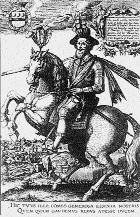
Handbills of Essex, Mountjoy and Cromwell, each depicted as the conquering general on a rearing horse.
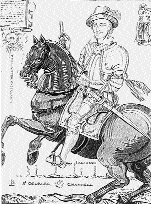
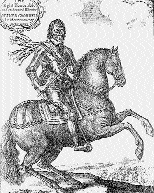
Whereas Sidney and Mountjoy had invited travelling theatre troupes to Ireland, Wentworth had a permanent theatre set up close to Dublin Castle. He had himself painted three times by Van Dyck. Like Perrot he abused uncooperative privy councillors. He court-martialled Lord Chancellor Adam Loftus who was forced to kneel before him. He also made use of the Castle Chamber. Unlike his predecessors he exploited Poynings’ law effectively so as to control parliament and drive through ambitious colonisation and taxation programmes. When he built up the Irish army to invade Scotland where he also had ambitions to be lord deputy, the English parliament began to fear that ‘Black Tom Tyrant’ had additional secret plans for his army and so began the long drawn out constitutional crisis in the three kingdoms.
When Ireland rebelled in 1641, neither king nor parliament trusted one another to raise an army to suppress it. One might have expected a rehabilitation of Sir Henry Sidney when his descendants Robert, Earl of Leicester (1641-43) and his son, Philip Viscount Lisle (1646-47), had the charge but all the talk was of Spenser’s model. Oliver Cromwell eventually took up the challenge. His victorious Irish campaign of 1649-50 enabled him to reduce Scotland and cow the English parliament in turn. The result was the complete reform of Ireland and dictatorship in England.
In 1687 Ireland again offered the spectre of arbitrary government when the Irish themselves took over the viceroyalty. The re-establishment of Catholicism under Tyrconnell, not just in the institutions but also in the army, was the cause of alarm. Indeed there was an ‘Irish fright’ in England in December 1688 when it was feared that his army had landed. The Irish experiment and the prospect of an Irish army coercing England—however remote—was therefore an important, if neglected, factor in the Glorious Revolution.
Conclusion
The Irish vice-royalty was a threat to the constitutional stability of the Tudor-Stuart state. The reform of a colonial society like Ireland, which was also a kingdom without a resident monarch, was always likely to slide into arbitrary rule, the more so because the process involved warfare and major structural change. Because the Irish rebelled against ‘reform’, the standing army in Ireland could grow to an enormous size. Such an army became an important factor, indeed a manifest danger, if there was a crisis in Britain. The lord deputies, its commanders-in-chief, were players in English politics—they had to be to gain appointment. As Englishmen in Ireland, they became inured to ‘emergency’ methods which ran counter to the traditional norms of the mixed polity which prevailed at home. These English lord deputies were a far greater threat to England than any Irish rebel that they were sent to suppress. The potential of the office had been revealed by St Leger, Sussex and most specially Sidney but it was only fully exploited by Wentworth and Cromwell after Perrot had thought about it in his more explosive moments and Essex had pointed the way. From all this, it is apparent that the Irish vice-royalty is of more than just Irish importance. As an important cog in the workings of a European multiple-kingdom, further study of the office requires not only a British political and constitutional dimension but also a wider comparative context.
Hiram Morgan is currently Visiting Irish Professor at Colby College, Maine.
Further reading:
C. Brady, ‘England’s defence and Ireland’s reform: the dilemma of the Irish viceroys, 1541-1641’ in B. Bradshaw and J. Morrill (eds.), The British Problem, c.1534-1707: state formation in the Atlantic archipelago (London 1996).
D. Edwards, ‘Beyond Reform: martial law and the Tudor reconquest of Ireland’ in History Ireland V.2 (Summer 1997).
C. Highley, Shakespeare, Spenser and the Irish Crisis (Cambridge 1997).
H. Morgan, ‘The fall of Sir John Perrot’ in John Guy (ed.), The Reign of Elizabeth: court and culture in the last decade (Cambridge 1995).
This paper was originally given as a lunchtime lecture at the Folger Shakespeare Library in Washington DC in 1998.
















